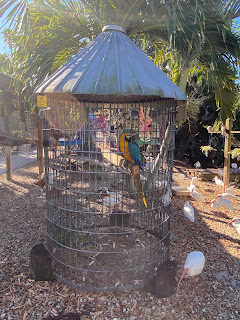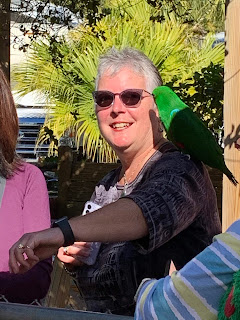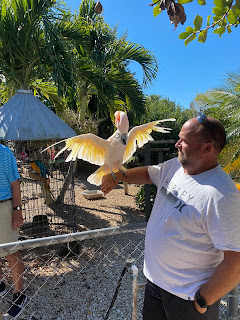 |
| "Pumpkin"; Catalina Macaw in her cage |
 |
| Swans and more on the pond |
 |
| Libby with Cockatoo (whose name I don't remember) |
 |
| Libby with "Dusty Rose" |
 |
| A conure from South America |
 |
| Libby with "Rico", a male Eclectus parrot from Australia |
 |
| "Rico" on a young girls arm |
 |
| "Rico" on my shoulder |
 |
| Carol and "Woody" |
 |
| Carol and "Woody" ~ little guy with "Axel" |
 |
| "Pumpkin" a Catalina Macaw |
 |
| Carol and "Pumpkin" |
 |
| Blue and gold macaw |
 |
| "Peaches" a Moluccan Cockatoo from the South Pacific |
 |
| "Peaches" mate "Piper" and Carol |
 |
| Miniature monkey in the primate exhibit |
 |
| Ring-tailed lemur in the primate exhibit |
 |
| Blue Crowned Pigeon from New Guinea |
 |
| Butcher looked to nature for solace after the loss of his son. |
 |
| Butcher photographs exclusively in black and white. |
 |
| While associated with the Everglades, Butcher photographs landscapes throughout the world. |
 |
| Roseate Spoonbills |
 |
| Pied-billed Grebe |
 |
| White Pelicans |
 |
| Little Blue Heron |
 |
| Hardworking Bayou |
As with most of my blog posts, I should give photo credit to Carol. She's got a great eye and often captures better pictures than I do. When I sit down to do a post I go through her pictures and mine to find the ones that best showcase our experience. She's also my first reader and editor. It's a team effort and I'm grateful for the assist.
💚💛💜
💚💛💜

